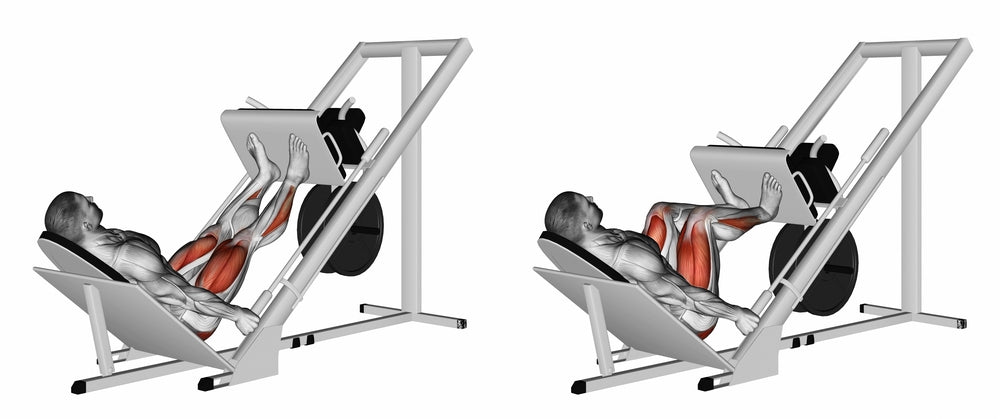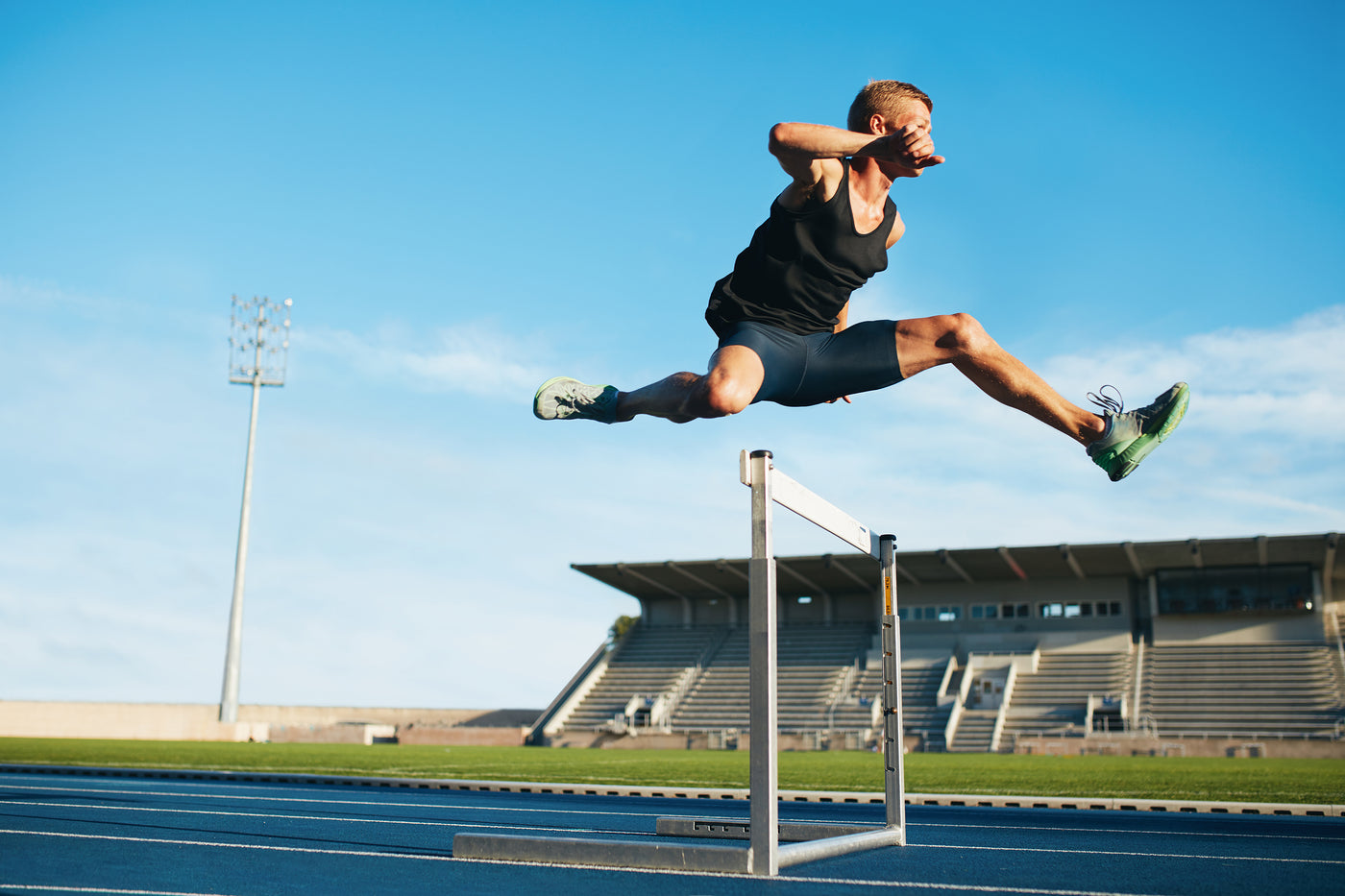Exercise Anatomy
Leg Press
Unleash the power of your lower body with the Leg Press-an efficient and straightforward exercise that targets your quads, hamstrings, and glutes. Skip the complexity and dive into a machine that allows you to lift heavy, fostering strength and muscle development. Whether you're a novice or a seasoned lifter, the Leg Press is a go-to for sculpting powerful legs and achieving a solid foundation of lower body strength.

Major Muscles and Actions Involved
The Leg Press, a staple in lower body strength training, revolves around the joint action of knee extension and hip flexion. As you push the platform away from your body, the knee joint extends, straightening the legs. Simultaneously, the hip joint flexes, moving the thighs towards the torso.
Engaging in the Leg Press activates the major muscles of the lower body, primarily targeting the quadriceps, hamstrings, and glutes. The quadriceps, situated at the front of the thigh, contract to extend the knee, while the hamstrings, located at the back of the thigh, contribute to stabilizing the movement. The glutes, acting on the hip joint, provide additional power during the press.
Additionally, the calf muscles, including the gastrocnemius and soleus, play a supportive role in stabilizing the ankle joint throughout the exercise. The Leg Press, with its comprehensive engagement of these major muscle groups, offers an effective and controlled means of developing lower body strength and muscle mass.

Sports Uses
The Leg Press, renowned for its ability to build lower body strength and muscle mass, finds direct benefits across a spectrum of sports, contributing to enhanced performance and injury prevention.
In the world of track and field, sprinters and jumpers leverage the Leg Press to fortify their leg muscles, crucial for explosive starts and powerful takeoffs. The exercise's capacity to target the quadriceps, hamstrings, and glutes aligns perfectly with the demands of these explosive athletic endeavors.
For athletes engaged in football, where strong and agile leg movements are paramount, the Leg Press serves as a cornerstone in training routines. Linemen and running backs, in particular, harness the exercise to develop the power needed for swift direction changes, tackles, and forceful sprints on the field.
Basketball players, known for their dynamic movements and explosive jumps, incorporate the Leg Press to enhance lower body strength. The exercise contributes to the development of powerful leg muscles, aiding in vertical jumps, quick lateral movements, and overall agility on the court.
In the realm of weightlifting and powerlifting, the Leg Press becomes a valuable accessory exercise. Weightlifters use it to complement their training regimen, focusing on building strength in the lower body, which translates to improved performance in lifts such as the snatch and clean and jerk.
Cyclists, seeking to enhance their pedal power and endurance, often include the Leg Press in their training routine. The exercise targets key muscle groups involved in cycling, such as the quadriceps and hamstrings, helping cyclists generate more force with each pedal stroke.
In rehabilitation settings, the Leg Press plays a crucial role in recovering from lower body injuries. Its guided and controlled nature allows individuals to strengthen their legs safely, aiding in the rehabilitation process and preventing further injuries.
In essence, the Leg Press stands as a versatile and effective exercise that transcends specific sports. Its universal benefits in building lower body strength make it a valuable tool for athletes across various disciplines, contributing to improved performance, resilience, and overall athletic prowess.
Exercise Tips
- Technique:
Prioritize proper technique on the Leg Press to ensure safety and effectiveness. Place your feet shoulder-width apart on the platform, ensuring they are flat and centered. Maintain a neutral spine, pressing through your heels as you extend your knees and hips. Avoid rounding your lower back and ensure a controlled descent and ascent. - Range of Motion:
Embrace a full range of motion on the Leg Press while maintaining control. Descend until your knees are at a 90-degree angle or slightly below, ensuring the platform does not touch down abruptly. This comprehensive range optimally engages the quadriceps, hamstrings, and glutes, contributing to a more effective workout. - Amount of Weight Used:
Start with a moderate amount of weight when initiating Leg Press exercises, especially if you're new to the movement. Focus on mastering proper form before progressively increasing the resistance. Gradually add weight to maintain a challenging workout while preserving controlled and precise execution. - Variations:
Explore different Leg Press variations to target specific muscle groups. Experiment with single-leg presses or wide and narrow stances to emphasize different aspects of the quadriceps, hamstrings, and glutes. Incorporating variations adds diversity to your workout routine and ensures a more well-rounded development of lower body strength. - Breathing:
Establish a consistent breathing pattern during the Leg Press to enhance stability and focus. Inhale deeply as you lower the platform, and exhale forcefully as you push it back to the starting position. This controlled breathing not only supports core engagement but also contributes to overall lifting efficiency and concentration during the exercise.
